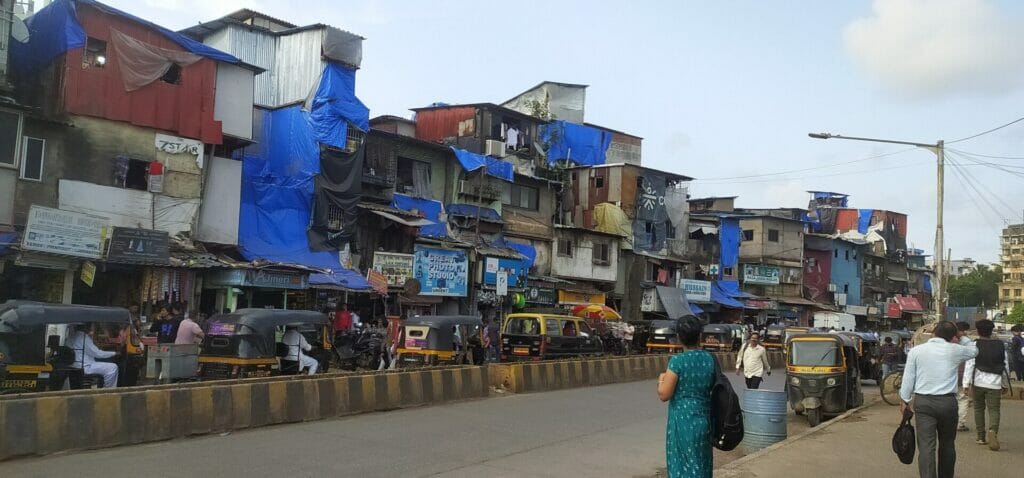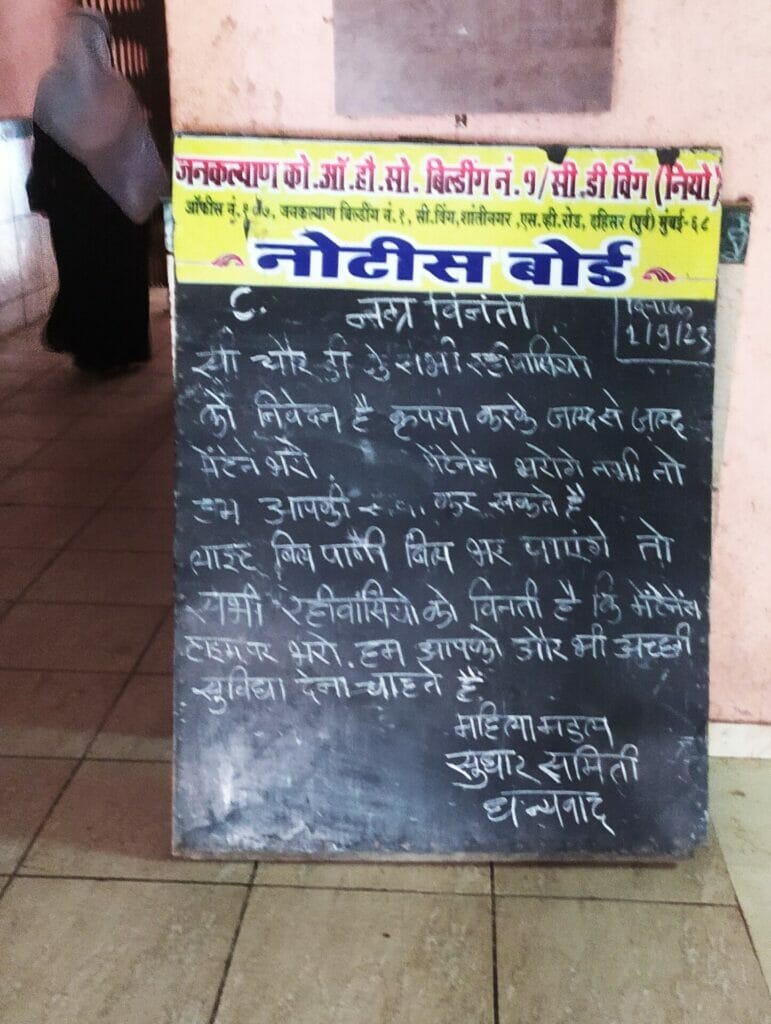Keeping the slum dwellers at the core of its planning, the Slum Rehabilitation Authority (SRA) scheme was initially conceptualised way back in 1995.
With about half the Mumbai’s population living in informal settlements, the SRA scheme is critical for ensuring better quality housing for all Mumbaikars. The city has about 2149 SRA projects, involving 5,29,434 proposed tenements and 2,49,887 tenements already handed over to people.
As we saw in the first part of this series, the buildings are poorly maintained and affecting the not just quality of life but also causing extreme stress to the residents due to various issues. In this part, we examine if poor policy planning had anything to do with the current situation.
At the time of inception of SRA housing, the Maharashtra government did conceive a way for the marginalised to afford the maintenance charges of the buildings, in which they were to be accommodated. The SRA had envisaged setting up of a corpus fund, to which the developer would contribute. And the interest on this corpus was expected to take care of major requirements of maintenance of the buildings.
“Earlier the developer had to contribute Rs 20,000 per flat towards the corpus, now it has been increased to Rs 40,000 per flat. Also, while earlier the SRA would retain the corpus with it and disburse only the interest to the SRA societies for maintenance. Now the SRA has decided to handover the entire corpus to SRA resident societies soon after the OC is granted. We do monitor to ensure that societies do not spend from the corpus though,” explains Satish Lokhande, the chief executive officer of the Slum Rehabilitation Authority (SRA).
“Subsequent to the society getting the occupation certifications, the residents are responsible for the day-to-day maintenance of the buildings while the developer is kept liable for bigger expenses for three years as part of the defect liability period,” he added.
But that has not worked.
Insufficient corpus for SRA maintenance
The plans looked great on paper, the reality on the ground turned out to be quite different. The SRA buildings soon became synonymous with ill-maintained buildings with serious concerns about the quality of the structures. Housing activist and co-founder of Mumbai Bhadekaru Sangh, Madhu Chavan observes, “Though there is a provision made to reduce burden on the residents, the reality is that such an amount is paltry and insufficient for maintenance. The government must regularly review the corpus norms to ensure that it serves its purpose.”
Madhu also says that developers tend to ignore the quality of the SRA housing and are focused on construction of apartments for the sale component of the scheme. This leads to lesser shelf life of the SRA buildings, increasing the maintenance costs.
He suggests that the SRA should ensure that developers maintain the same quality of materials and construction for the houses for sale and rehabilitation.

In his 2021 report, “Community led development of slums in Mumbai – need of the hour” architect Rahul Kadri states, “There is no regulation regarding the quality of rehabilitation buildings. To add to it, developers consider the slum dwellers to be secondary citizens and minimise their expense towards the provision of the rehab units, constructing them in a way that compromises their standards of living.
Amenities and open spaces are compromised, leading to the creation of ‘vertical slums’ with extremely high densities.”
Kadri says moving in the new rehabilitated housing brings in higher cost of living for the residents and further stresses their meagre resources, and ultimately pushes them back to the slums.
“The slum dwellers experience a changed lifestyle, with added expenses such as monthly maintenance charges, increased transportation, education facilities and health facilities. However, the income level of slum dwellers remains constant. This incompatibility between low income and the high cost of living in the city, as well as the dissatisfaction with the new rehabilitation buildings, forces distressed residents to move back to slums or to look for new squatter settlements, ultimately failing to solve the humanitarian crisis of informality and merely accomplishing the capitalist objective of increasing density and optimizing land resources. This is also one of the reasons the slum dwellers may be selling or renting their dwelling units,” Kadri’s report says.
Read more: Voices of the women of slum resettlement in Mumbai
Is people’s attitude to blame?
Legislator Manisha Choudhary, who receives many SRA-related complaints from her constituency in Dahisar, suggests that all SRA housing should be linked with the Aadhaar numbers of residents to prevent multiple claims. “People tend to take houses in SRA housing and tend to return to slums in other area to claim for another SRA house. This tendency needs to be nixed and they should be prevented from claiming more than one free house,” suggests Choudhary.

Keval Valambhia, chief operating officer of CREDAI- Maharashtra Chamber of Housing Industry (MCHI), says that people are not used to paying for their services. “In rehab buildings the slum dwellers misuse the systems without a care in the world because they know they don’t have to pay for it. Fire fighting equipment gets stolen. This cavalier attitude stems from the fact that it’s free for them. It’s a myth that slum dwellers cannot afford to maintain the buildings. They have been given a Rs 50 lakh – Rs 1 crore home for free and the least that they can do is maintain their own free home.”
Valambhia feels that the root cause of the problem is the government’s attitude. “…the crux of all the problems is the concept of “free,” free home, free maintenance.”
Instead, he suggests that the government follow a carrot-and-stick policy to link the maintenance of buildings with the property tax or water bills and offer incentives such as concession in taxes for good maintenance of buildings.
However, the residents refute this by saying that they are given no clue about the maintenance charges for the new structures. “It is only much later after one moves into the SRA buildings, that one gets to know the real maintenance costs, which gets determined based on the overruns of a particular building. Hence, one isn’t able to plan ahead or assess if one is fit to be prepared for the costs involved,” says resident Satish Sharnagat.
Read more: 27 years on, Mumbai’s Slum Rehabilitation Authority (SRA) has failed to deliver
Faulty concept of SRA
“The basis of the SRA is faulty – with the onus being placed entirely on the private developer to take forward a government scheme. How or why would private developers show a charitable bent of mind towards the slum dwellers?” questions Shailesh Gandhi, former central chief information commissioner, who had studied the issue of SRA housing in-depth.
He says that the basic flaw in SRA planning led the State to depend on the private sector by giving away its key resource, its land. “The SRA didn’t come as a solution, instead it encouraged slum dwellers to profiteer from their slums, thereby encouraging further slumification of Mumbai. Besides, it also encouraged corruption and criminality,” points out Gandhi.
Unintended consequences?
“Although the SRA intended to serve public welfare through facilitating the redevelopment of slums, it has turned out to be quite contrary to the same. Driven by profit margins, developers use up to 75 per cent of the available land to build units that they can sell, forcing the existing slum dwellers into the remaining 25 per cent, transforming horizontal slums into vertical ones in the name of high-rise development, ” says architect Anuprita Dixit, a town and regional planner, who serves as a design director with IMK Architects.
Large number of flats in a smaller space leads to high maintenance and higher costs. And when dues start piling up, soon the maintenance goes beyond the scope of the housing societies.
Another offshoot of the SRA model of development the developers go for ultra-luxe housing to recover their costs for the rehabilitation housing. Result – There is no incentive for the developer to build affordable housing and the mismatch between the huge demand and the short supply of affordable housing stays.
“Due to the large premiums and statutory payments that developers have to make towards the redevelopment of slums and the often long durations it takes to get slum dwellers’ consent and permissions, developers tend to face heavy financial burdens (which, in turn, leads them to build high-end sale flats and economise on the rehab units),” explains Anuprita.
Solving SRA maintenance problems
Planners feel that by offering subsidised maintenance, the residents are not invested enough in maintaining the buildings. Anuprita says, “It may be made mandatory for the beneficiaries of the free housing units to contribute a predetermined amount towards a maintenance fund on the allotment of the unit. This contribution can be used for any shortfalls (with rising costs) or unforeseen maintenance or repairs that may be required. This will eliminate expectation and dependence on the developer for all maintenance issues and instil a feeling of belonging and ownership towards their buildings, hence, responsibility for its upkeep.”
Instead of giving free housing units to slum dwellers, if it is made mandatory for them to contribute towards the construction cost of their units (through subsidised loan schemes), a strong sense of belonging and ownership can be instilled. The slum dwellers can play a pivotal role in ensuring good quality of construction to start with, which will ensure low maintenance over the years. The developer will have a lesser burden of bearing the construction cost of the rehab units and contribute a larger amount towards the maintenance corpus. This will also ensure that the slum dwellers continue to live in the rehab units and not move into another slum by selling off their free units,”
“Ideally, the developer’s minimum corpus should be determined by the nature of the development such as number of storeys, rather than just a minimum specific figure, such that it covers projected maintenance costs for a minimum of 10 years,” recommends Anuprita.
Keval points out, “The biggest gap is that the one who constructs the building is being made to maintain the building and not the one who uses it.. throwing money at a problem will not lead to a solution.”
The experiences of the residents and limitations of the authorities only point to deepening of housing crisis for the urban poor of Mumbai.
Thanks for bringing up this important news